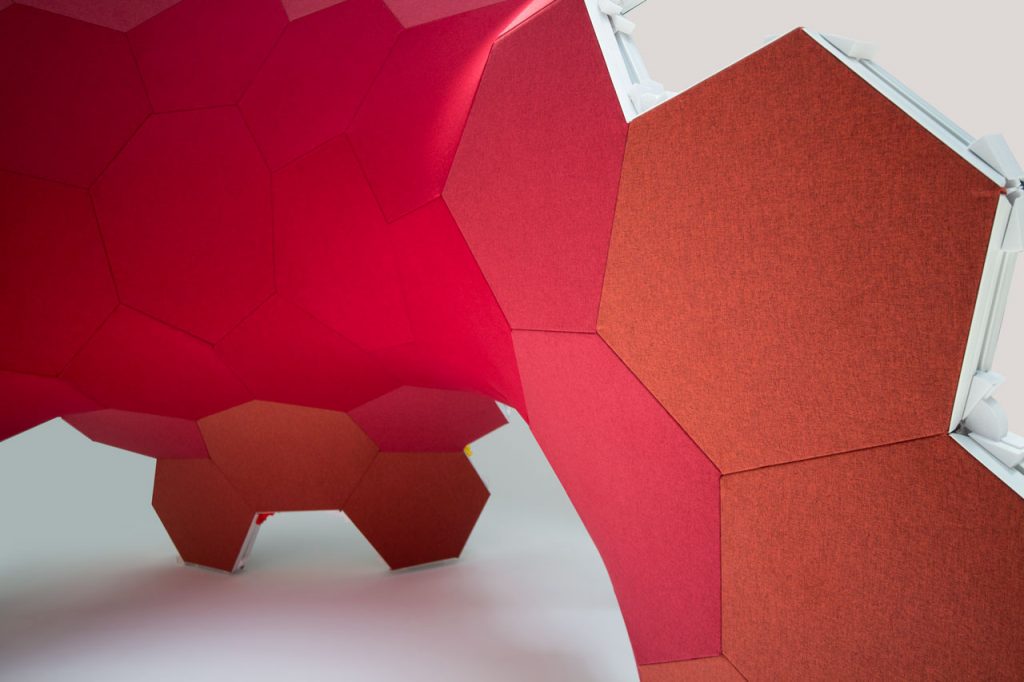
Defining Earthwool and Its Composition
Earthwool is a sustainable insulation material made primarily from recycled glass bottles and sand. This eco-friendly alternative to traditional insulation materials, such as mineral wool and fiberglass, is designed to provide exceptional thermal and acoustic performance. Manufactured using advanced processes like ECOSE® Technology, Earthwool is free from formaldehyde and harmful chemicals, making it a safer and more sustainable option for construction and acoustic treatments².
The use of recycled and renewable materials in Earthwool’s composition reduces its environmental impact, offering a high-performance product that aligns with modern sustainability goals. Its soft texture and improved handling properties make it a popular choice for applications like acoustic panels, fabric wall systems, and energy-efficient buildings³.

Acoustic Benefits of Earthwool
Earthwool’s dense structure and sound-absorbing properties make it ideal for acoustic applications. It is commonly used as the core material in fabric wrapped acoustic panels, acoustic wall panel fabric, and acoustical fabric wall panels. By reducing noise transmission and echo, Earthwool enhances sound clarity in spaces like conference rooms, theaters, and home studios⁴.
When paired with acoustically transparent fabric, Earthwool maximizes the effectiveness of acoustic treatments by allowing sound waves to pass through to the absorptive core. This combination is particularly beneficial in achieving precise RT60 measurement, ensuring balanced sound quality in critical listening environments⁵.

Sustainability and Environmental Impact
One of the key advantages of Earthwool is its commitment to sustainability. The use of up to 80% recycled glass in its production significantly reduces waste and energy consumption compared to traditional insulation materials. Additionally, Earthwool is manufactured without added dyes, phenols, or formaldehyde, minimizing its impact on indoor air quality.
Earthwool’s low embodied carbon makes it a preferred material for sustainable building design. Its thermal efficiency reduces energy consumption by minimizing heat transfer. These properties support compliance with green certifications such as LEED and BREEAM.
Applications in Modern Construction and Design
Earthwool’s versatility allows it to be used in a wide range of applications, from thermal insulation to acoustic treatments. In residential buildings, it is often installed in walls, ceilings, and floors to enhance energy efficiency and reduce noise. In commercial spaces, Earthwool is commonly integrated into fabric systems and stretch wall fabric systems to create functional yet aesthetically pleasing environments.
The material is also a popular choice for upholstered panels and fabric ceilings, where its lightweight yet durable properties provide both comfort and performance. Its compatibility with other acoustic materials, such as Rockwool, expands its potential applications in high-performance acoustic designs.
Future of Earthwool in Sustainable Design
As the demand for sustainable construction materials grows, Earthwool continues to lead the way with its innovative approach to insulation. Research and development efforts are focused on enhancing its performance, reducing production energy further, and expanding its applications in advanced architectural designs. The integration of Earthwool with acoustically transparent fabric and high-tech fabric systems demonstrates its adaptability and potential to meet evolving industry needs.

Earthwool is a revolutionary material that combines sustainability, performance, and versatility. Made from recycled glass and sand, it provides an eco-friendly solution for thermal and acoustic insulation. Whether used in fabric wall panels, ceiling systems, or energy-efficient buildings, Earthwool delivers high performance with a minimal environmental footprint. Its ability to support sustainable design practices while offering exceptional functionality ensures its place as a key material in modern construction and acoustic treatments.
References
- “What Is Earthwool?” Knauf Insulation, 2023
- “Acoustic Benefits of Sustainable Materials” Acoustic Geometry, 2021
- “RT60 and Acoustic Optimization” Audio Engineering Society, 2020
- “Eco-Friendly Insulation Solutions” Building Materials Online, 2022
- “Earthwool in Green Building Projects” LEED Journal, 2023
Share